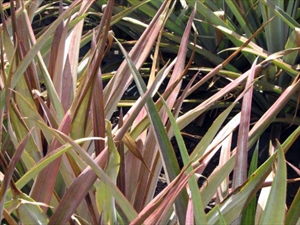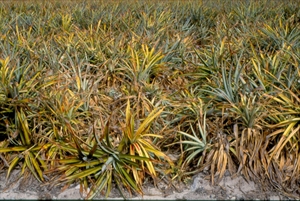- Worldwide distribution. In Oceania, Australia, Cook Islands, Fiji, and viruses recorded in quarantine from American Samoa and Samoa. Known from pineapple and false pineapple (Pseudananus).
- Damage: reddening (later pink), downward curling and tip dieback of leaves, and root collapse. Symptoms in young plants after 2-3 months; older plants after a year.
- Spread: Pineapple mealybug wilt-associated viruses are spread by Dysmicoccus species. Complex disease: PMWaV-2 most important virus but feeding mealybugs necessary. Mealybugs spread by ants, wind, and in consignments of fruit and planting material.
- Natural enemies: ladybird beetles and parasitoid wasps. Effective if ants controlled.
- Biosecurity: fresh fruit subject to import risk analysis; propagating material quarantined and tested for pineapple viruses.
- Cultural control: use plants freed from viruses (meristem culture or hot water 50°C for 30 mins), or select from fields with <10% disease. Avoid planting new crops next to old, or where disease present previously; plough around fields destroying ants' nests; weed around borders; remove infected plants.
- Chemical control: dip crowns in white or horticultural oils; destroy ants with baits or use synthetic pyrethroids against ants and mealybugs.







